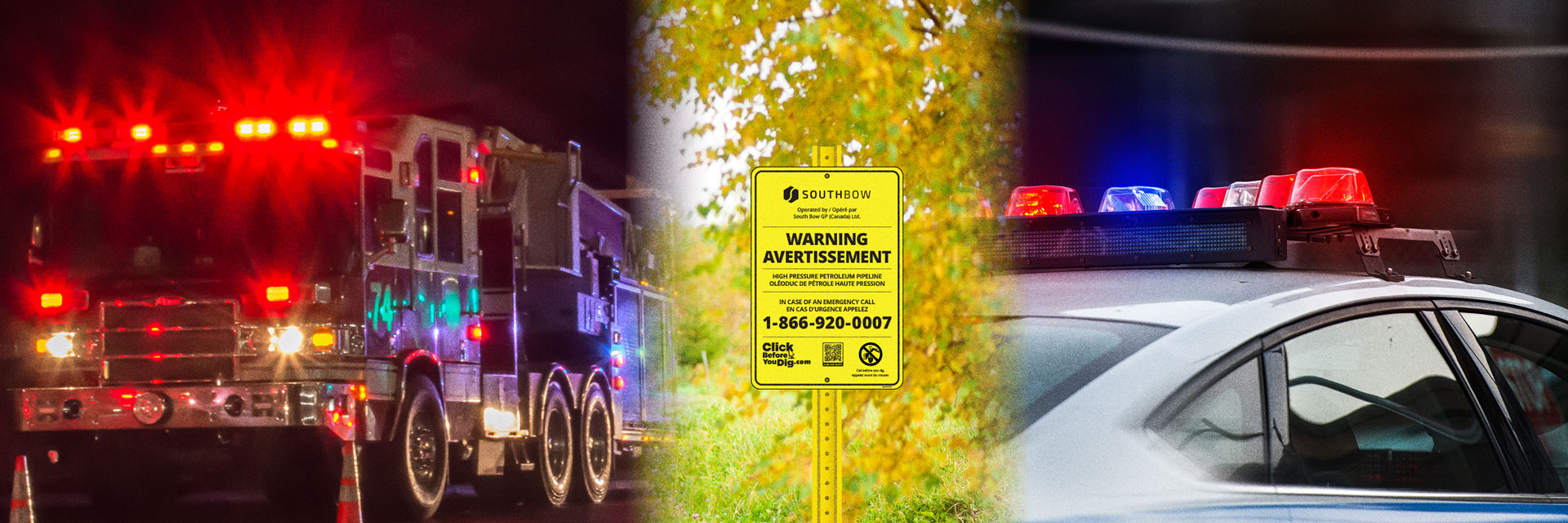Liaison Training Presentation
Download the current South Bow Training Program from the links below.
Product Characteristics
Product:
Crude Oil
Leak Type:
Liquid
Vapors:
Heavier than air
Health Hazards:
Respiratory tract irritant, may cause central nervous system effects such a drowsiness and or asphyxiation
Fire Hazards:
Extremely Flammable liquid or vapors are heavier than air an may accumulate in low areas and travel a considerable distance to an ignition source
How To Recognize A Pipeline Leak
Visual signs:
- Oil stains or puddles on the ground
- An oily sheen on water bodies like ponds or streams
- Discolored or dead vegetation around the leak area
- Abnormal ground conditions like frosted patches in warm weather
- Visible liquid pools near a pipeline
Smell:
- Strong petroleum odor
Sound:
- Hissing or blowing sound, depending on the leak size
South Bow Emergency Response Plans
We create Emergency Response Plans for every pipeline and project in our system. These plans must be in place before the pipeline ever goes into operation. While plans may vary depending on project and community needs, the basic elements of a plan will include hazard identification, notifications and response tactics to ensure South Bow personnel are able to effectively respond in the event of an emergency.
South Bow Emergency Response
We would respond immediately by shutting down and isolating the pipeline systems and/or shutting down the pump stations and dispatching emergency response personnel. The main focus of the initial response would be to stop operating the pump units in order to reduce the flow through that particular segment of pipe and then close isolation valves in the vicinity of the leak to limit its impact.
In the very unlikely event that a leak occurs, our company would take full responsibility for the emergency response and cleanup for as long as we own and operate the pipeline.
We have emergency response personnel on call 24 hours a day, seven days a week. These emergency responders consist of employees and contract personnel who specialize in emergency response. The local police and fire departments may be involved to protect the public and ensure our personnel are able to work safely.
South Bow Emergency Response Training
Yes, our company provides awareness training about responding to a pipeline incident. We view the communities we operate in as emergency response partners. We work collaboratively with these stakeholders on a continuous basis, inviting them to participate in exercises and training. South Bow does not expect volunteer or dedicated local fire departments to have the equipment or specific experience needed to respond to a leak or rupture.
